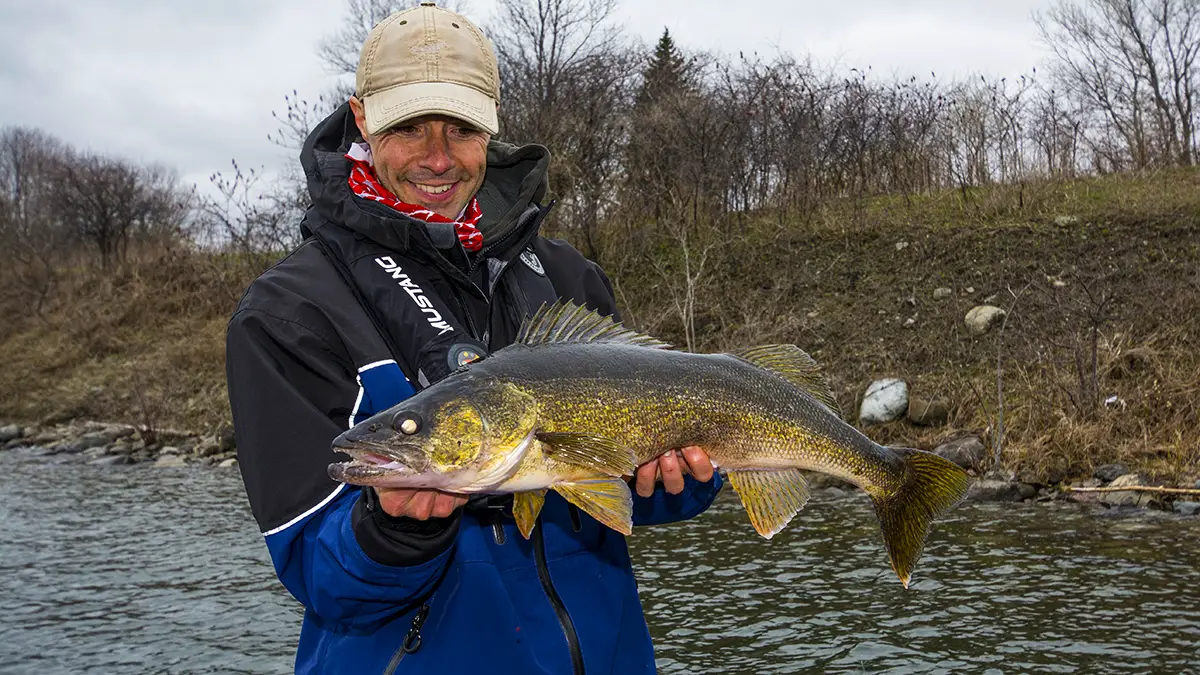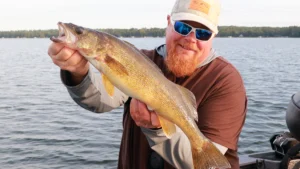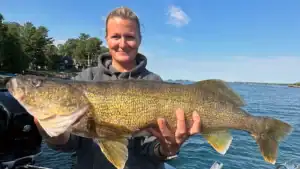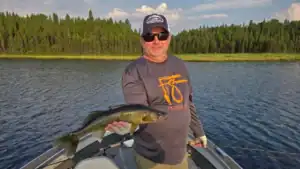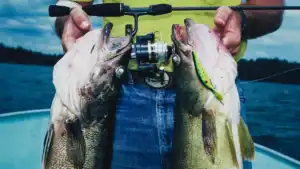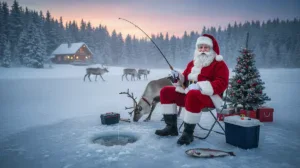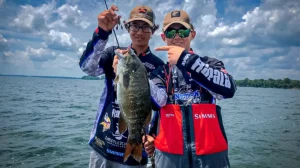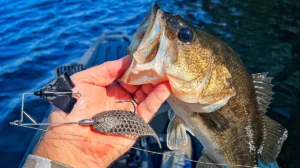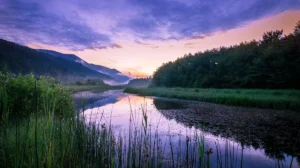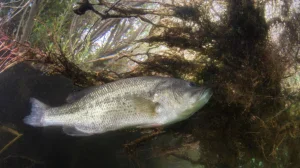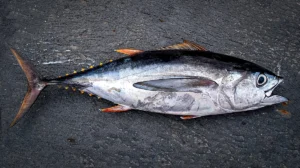Fishing for walleye is the ultimate experience for countless North American anglers. Walleye fishing is fun, provides angling opportunities during all four seasons and presents the chance to harvest great food for the table.
Since catching my first walleye decades ago, I’ve been intrigued by this opportunistic predator and figuring out how to get better at consistently catching them throughout the year. Walleye are found in lakes, rivers and reservoirs, and they can be caught on a variety of jigging, casting and trolling tactics involving both live-bait and artificial lures.
With so many different water bodies to explore and techniques to master, there’s plenty to learn when it comes to how to catch walleye and, for many anglers, this is a big part of what makes it so fun and addictive. Not to be overlooked is the fact these fish can reach impressive sizes. A giant walleye measuring 28-inches or more is certainly an impressive freshwater catch.
The intent of this guide is to help you get ready to catch walleye on a regular basis by covering the following topics:
- Understanding Walleye
- Best times to fish for walleye
- Where to find walleye
- Best walleye fishing techniques
- Best walleye fishing baits
- Other walleye fishing gear
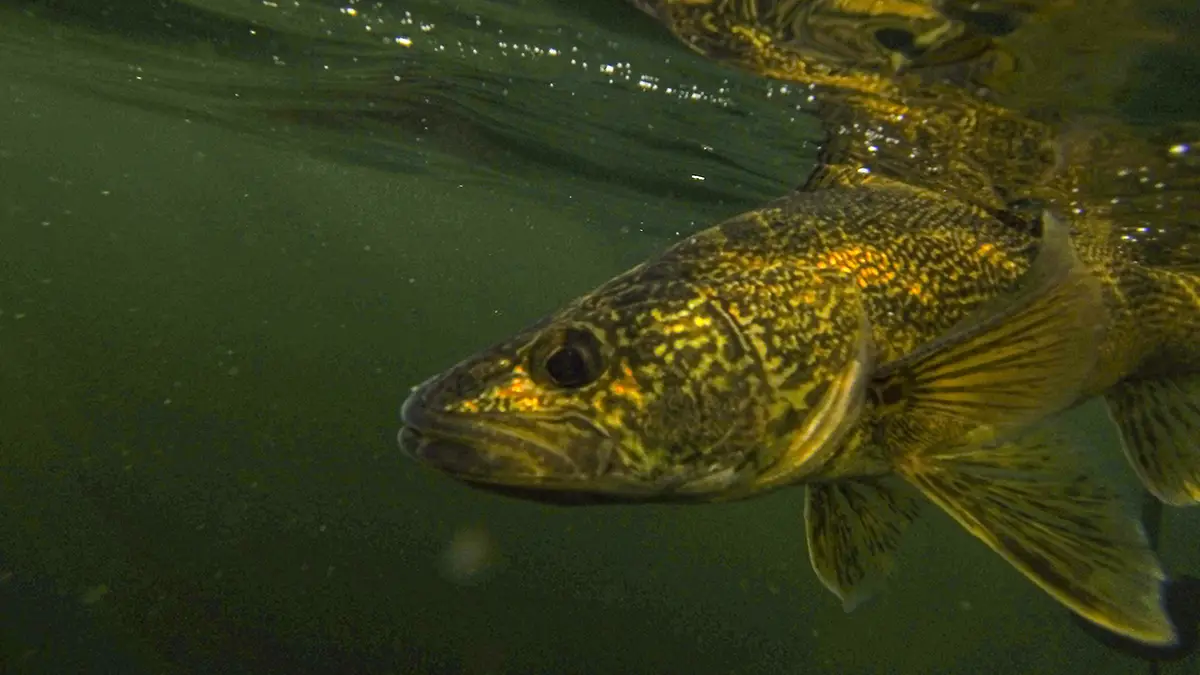
Understand Walleye
Knowing a bit about walleye as a species is going to help you become a better angler. You can learn all about walleye distribution, habitat, diet, spawning cycle and more in Steve Bardin’s Walleye — A Comprehensive Species Guide, but a few things deserve repeating because understanding them will help you find and catch walleye.
Looking at a walleye, you’ll notice their eyes take on a somewhat milky appearance in certain light. This characteristic relates to the walleye’s excellent low-light vision. When yellow perch are having difficulty seeing with the onset of nightfall, walleye are swimming around with the evolutionary equivalent of night vision goggles. Naturally, walleye use this quality to their advantage and actively hunt in low-light conditions and at night.
A walleye’s diet varies throughout its lifespan. Fish rank high on the menu for the walleye most anglers catch. Walleye are opportunistic predators, however, and will also eat crayfish, frogs, mayfly nymphs and more.
The Walleye Species Guide summarizes another important walleye characteristic anglers need to understand when deciding when and where to fish for walleye.
“Walleye are bentho-pelagic fish meaning they utilize both deep and shallow water to their benefits,” Bardin said. “During the daylight, walleye are generally benthic and stay in the deeper area of the water body. This allows the walleye to forage in low light conditions even during the day. During these benthic times walleye are often found in schools near structure … At night, walleye are pelagic which means they stay in the shallower areas of the water column … They move to these areas to feed on forage fish by taking advantage of their extremely efficient nighttime vision.”
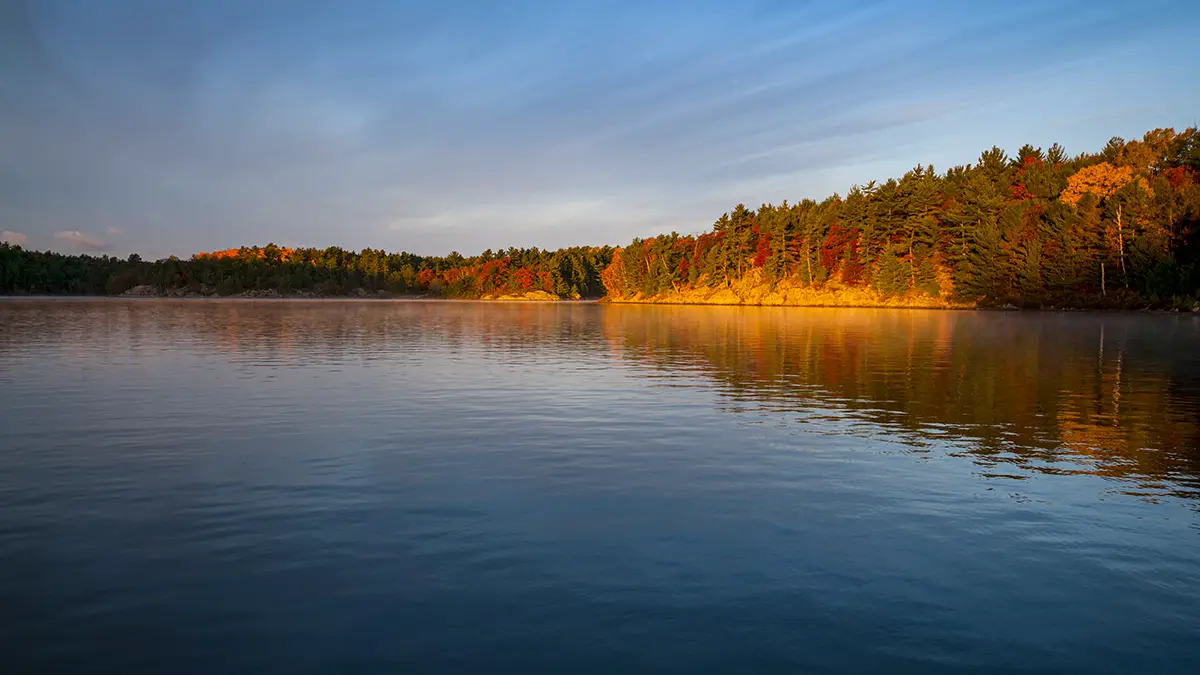
Best Times to Fish For Walleye
Being on the water when walleye are actively feeding in low light conditions is one of the easiest ways you can increase your catch rates. Fishing before sunrise and fishing during the first few hours of the morning has been some of the best fishing times and has rewarded me with some amazing walleye catches over the years. Dusk can be just as good. Fishing shallow water for walleye at night is also very productive.
Overcast days are generally better than bright, sunny ones to fish for walleye. But, there are workarounds for bright sun, including fishing deeper or in dirty water. Wind is another key factor to consider. Waves reduce light penetration as well as disorient baitfish. These conditions, in turn, often stimulate walleye feeding activity. With respect to the open-water season as a whole, spring into mid summer is a great timeframe to catch walleye, although, post-spawn fish can be moody for a little while.
Depending on the waterbody, late summer into early fall can sometimes pose challenges for anglers, but focusing fishing efforts during dawn, dusk and night will likely yield good summertime walleye catches. Mid-fall to early winter brings the arrival of cold water and some of the best walleye fishing of the year for both size and numbers. As winter’s icy grip takes hold, many anglers shift to ice fishing for walleye, but open-water opportunities can be found in certain areas with big fish concentrated in key spots.
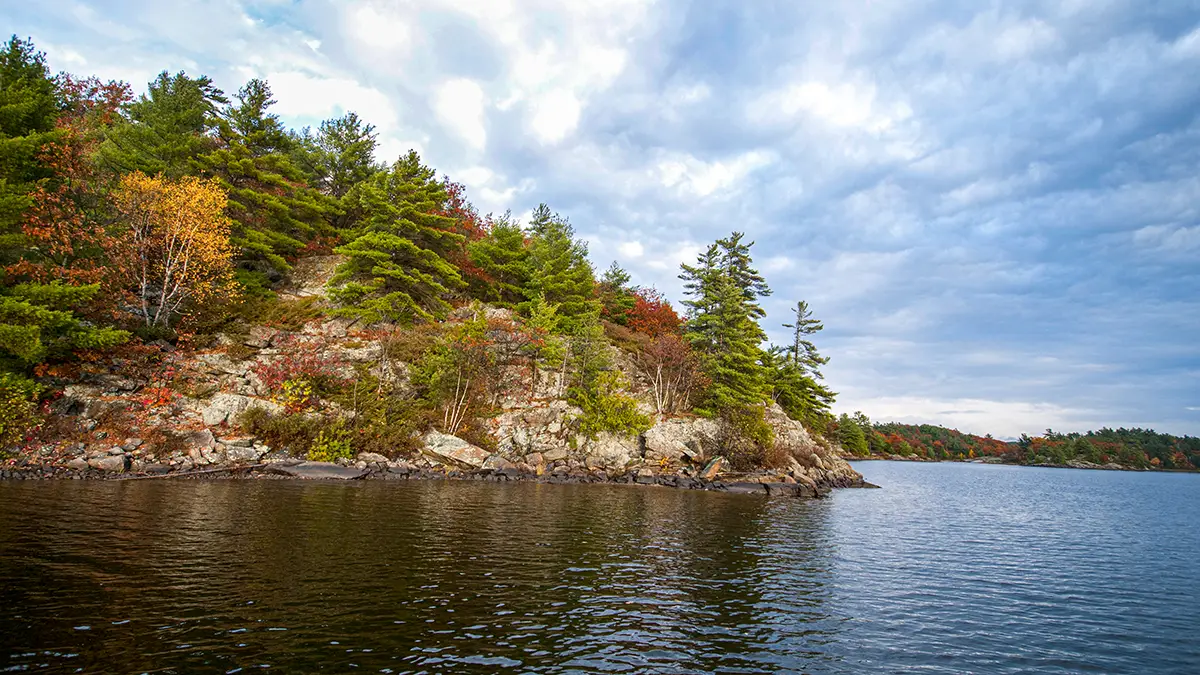
Where to Find Walleye
Walleye are a fairly adaptable species. They’re found in small streams to big rivers, in remote back lakes to the massive Great Lakes, and also in reservoirs. So, if there are walleye swimming in some of the waterbodies within your region, there are probably all kinds of great walleye hotspots close to you. Here are a few things to keep in mind when exploring your local waters for walleye.
Understand the seasonal cycles
One of the best things you can do to become a better walleye angler is learn the annual cycles of this species, and then use this knowledge to track down their whereabouts on a given lake, river or reservoir. Here are some high-level, general highlights.
Walleye spawn in early spring on shallow, rocky reefs and gravel shoals. They then hang around these sites for a while, recovering and taking advantage of the abundance of forage found in the shallows this time of year. In summer, walleye are often found positioned near deeper structures or suspending in open-water, following and feeding on schools of baitfish.
While in shallow, fertile water systems, its common to find walleye relating to deep, healthy vegetation. Come autumn, walleye transition from summer locations to sites where they will spend the cold-water period. Generally, this sees fish holding in deep water in close proximity to their spring spawning grounds.
Consider a walleye’s daily movements. As noted above, a common 24-hour pattern is for walleye to relate to deeper areas when the sun is high in the day, and then move shallow to feed from dusk till dawn. As an angler, it’s important to capitalize on this behavior, whether you’re fishing from the bank or from a boat. Also keep in mind walleye prefer their deep-to-shallow commutes to be as short as possible.
Find a large, 15-foot flat holding yellow perch and minnows that’s framed with cabbage on one side and a drop-off into 35 feet of water on the other, and there’s likely walleye hanging around at the base of the break-line in the day. Come sunset, expect walleye to go on the offensive and move up on the flat to feed.
Find the forage
Walleye are never far from their next meal. Get in the habit of asking yourself what and where walleye are eating. If you’re fishing a waterbody with yellow perch in it, you can bet this species will heavily influence walleye whereabouts. In some lakes, crayfish and mayfly nymphs are important food sources at certain times of the year.
Walleye locations are also tied into forage movements. When baitfish school up, expect to find walleye following their food source. Walleye concentrating around and into tributaries in the fall is just one example of this pattern (although it’s likely walleye are here too because they’ll spawn in these areas in spring). The fall frog migration can also prompt walleye to move into shallow water in front of marshes and fields to ambush these amphibians eager to burrow into the muck of the lake bed.
Current positions fish. Jason Sealock made this point when discussing where to find bass in How to Catch Bass, and focusing on water flow is as important when fishing for walleye. I catch a lot of river walleye every year from current seams (i.e., where fast and slow moving water intersect). These features are found around wing dams, points, island, channel swings, boulders, humps and other obstructions.
Look for structural complexes. When deciding where to fish for walleye, focus on locations offering several structural elements within relatively confined area. On lakes, look for island clusters, multiple mid-lake humps, saddles and other structures closer together, but also look for shallower feeding areas containing rocky reefs, tributaries, creek channels, points and sand bars. On rivers, focus on bends, points, wing dams, tributaries, bridges and so on.
Rocks, deep vegetation and wood can all be important. Walleye, for good reason, have a reputation of being fond of rocky areas. Hard-bottom mid-lake humps, rocky points and boulder strips on flats are just three areas immediately coming to mind where I caught a lot of walleye this past summer and fall. But — and this is a big but — walleye also really like vegetation.
Commonly referred to as weed beds by many in the walleye fishing community, these underwater forests provide walleye with plenty of food, shade during the day (remember they can be light sensitive) and, in the case of rivers, relief from current. I have caught my fair share of walleye buried deep within cabbage and milfoil beds on sunny days, but by far the majority of my catches occur along the outer perimeter (aka grass line, weed edge).
Sunken wood cover holding forage, providing shade and, in some cases, current relief can also concentrate walleye in reservoirs, rivers and lakes. Submerged, standing timber and fallen trees along steep shorelines are just two examples of wood cover with potential to hold walleye.
Fish edges
It pays to keep a walleye’s fondness for edges in the forefront of your mind when deciding where and how you fish for them. Walleye frequently position along drop-off ledges, bottom transitions and weed lines. A current seam is another common fish-holding edge.
Edges come in many varieties. Some are less obvious than others, but it’s still important to find them. For example, walleye often hold on flats when these dishpan areas are home to yellow perch schools, crayfish, emerging mayfly nymphs and other forage.
At first glance, flats can appear featureless, but scanning the area with a fish finder will likely to reveal some type of edge walleye will use as a travel corridor for their movements on the flat. These could be long strip of rocks, the edges of short grass beds growing on the flat or a deeper trough or old creek channel along bottom.
The takeaway here is this — learn to find edges within an area and you will find the spots where walleye are concentrated and, in turn, catch more fish.
Best Walleye Fishing Techniques
Part of the fun of walleye fishing is the variety of tactics you can use to catch them. A well-rounded walleye angler will be skilled at an assortment of casting, vertical jigging, trolling and live-bait rigging presentations. We can’t discuss every technique in one article, but here’s a quick overview of some popular ones.
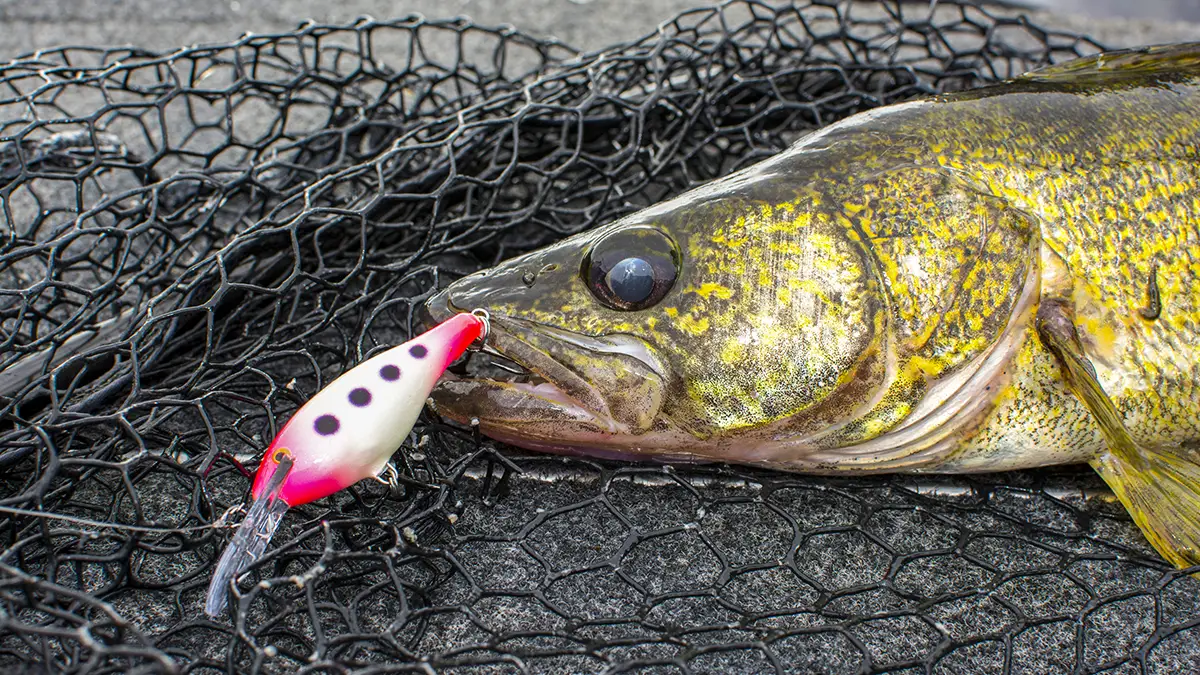
Casting tactics
Whether fishing from shore or a boat, casting is a great way to catch walleye. In spring, I catch a lot of post-spawn walleye casting 1/8- to 3/16-ounce jigs rigged with 3- to 4-inch soft-plastic minnows to shorelines, points, drop-offs and vegetation edges in 6 to 14 feet of water. Casting and hopping a lipless crankbait along bottom in dirty water is another hot springtime tactic. Casting and retrieving a shallow-diving crankbait over the top of sparse grass flats and along rocky shorelines is also effective from season opener into early summer.
Retrieving a swimbait on a jig is a good way to cover water in the summer. It’s also deadly for walleye in low light conditions and at night.
In autumn, casting 3/8-to 5/8-ounce metal lures, such as blade baits and Rapala Jigging Raps, to mid-lake structures and drop-offs between 18 to 35 feet catches plenty of fish. Slowly retrieving a swimbait along bottom is also good this time of year.
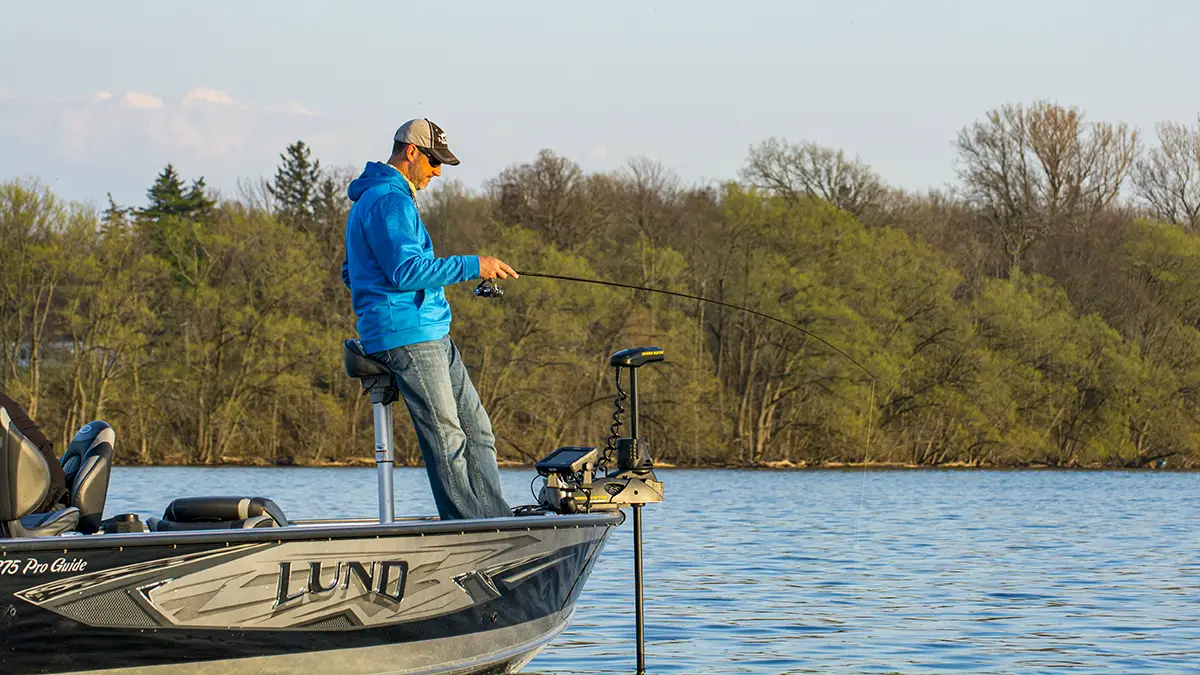
Vertical jigging
This is a skillset worth learning if you fish for walleye from a boat. In a nutshell, the goal is keeping your line hanging vertically and the lure directly below you. When it’s done right, vertical jigging provides excellent control of the bait. This results in a better presentation and more bites. You’ll also get fewer snags vertically jigging hazardous terrain compared to casting.
This technique is extremely popular in rivers, but effective in lakes and reservoirs, too, whenever walleye are deep enough that a boat overhead won’t spook them. Jigs tipped with live-bait or soft-plastics and metal jigging baits are some popular lures for this technique.
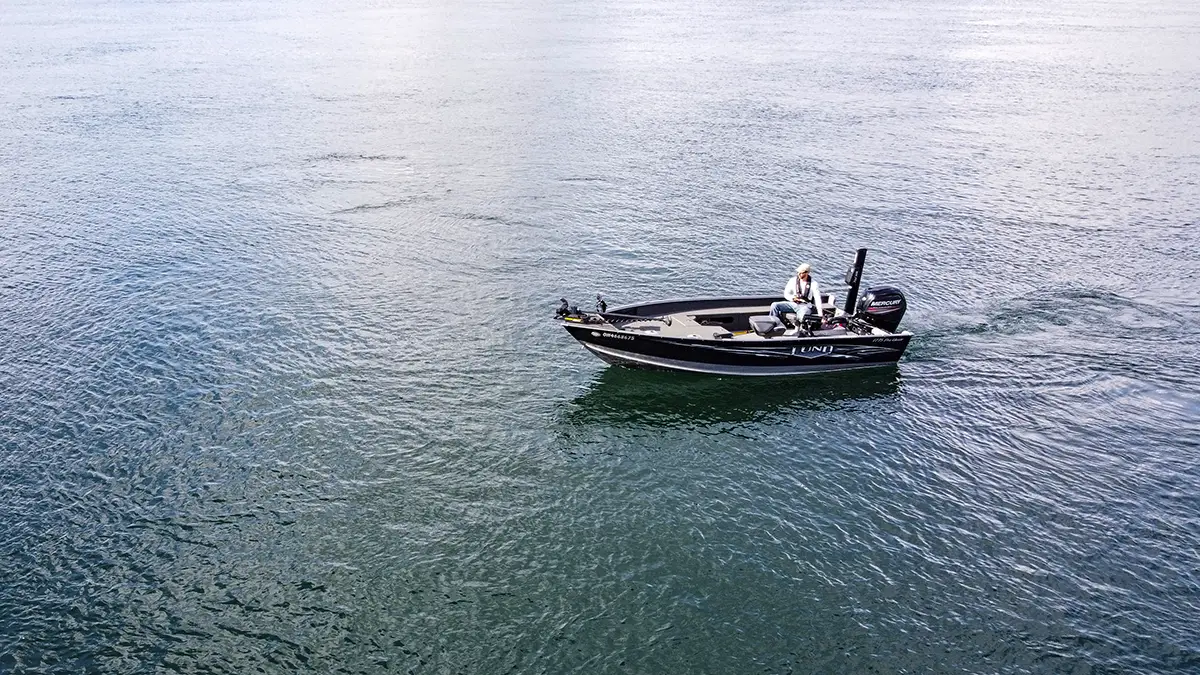
Trolling for walleye
Trolling maximizes the time your bait is in the water and is a great technique to cover ground. Trolling’s a smart strategy when you’re fishing new areas and trying to locate fish. Trolling tactics are also efficient when walleye are scattered or suspended. Hard-baits, spinners and spoons are just three popular baits for trolling.
Trolling tactics reign supreme on the Great Lakes, but you can pull baits and catch walleye anywhere they swim. When several anglers are in the boat, planers boards are often used to stagger lines and keep trolling spreads organized.
When starting out, you don’t need a bunch of trolling-specific equipment to catch walleye. Troll a crankbait behind the boat (i.e., flat-lining) along the break line of a shallow food shelf at dusk and you’re probably going to get bit. Then at night, switch to trolling a shallow-running crank or minnow bait over the shallow flat and you’ll keep catching walleye under the stars.
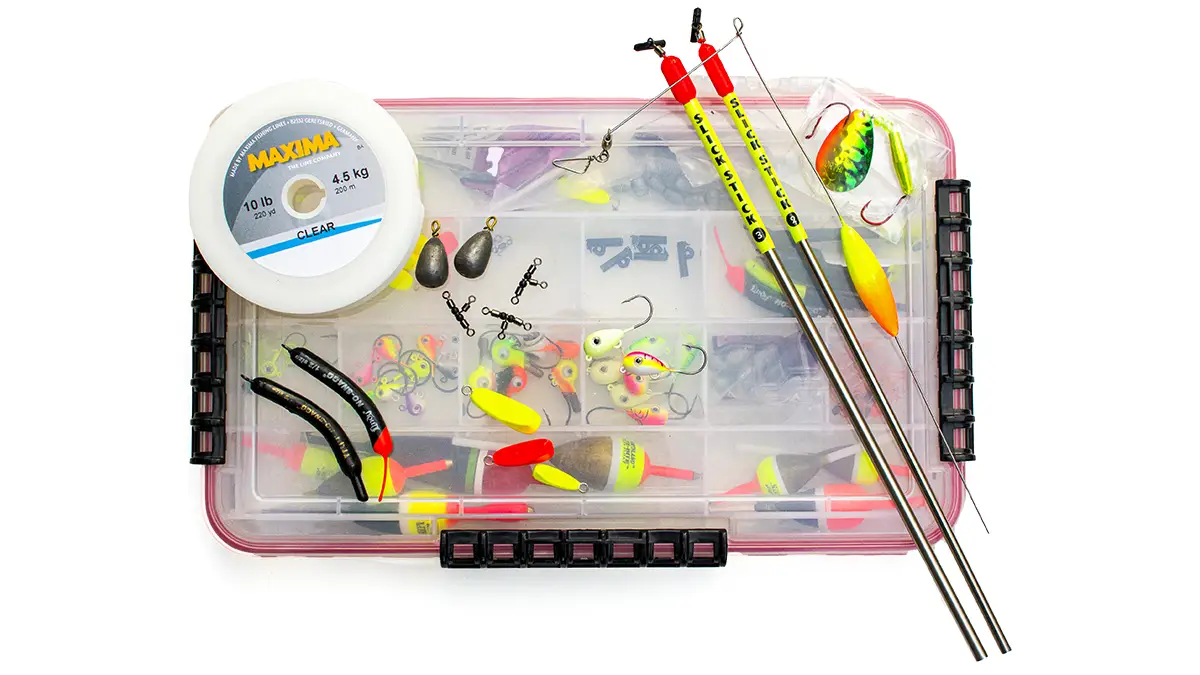
Live-bait rigging and bottom bouncing
Using live-bait to catch walleye is a deeply rooted tradition. As such, a variety of casting, jigging, trolling and drifting techniques center around using real minnows, leeches or night crawlers to tempt walleye to strike.
One of the most potent rigs ever at making fussy walleye eat is a walking sinker rig (aka Lindy Rig). It consists of a snag-resistant sinker, followed by a swivel, a length of monofilament leader and then often an octopus hook. Personally, I prefer some buoyancy at the business end of this rig to keep a minnow, leech or nightcrawler up off bottom, and lately, I’ve been using VMC’s floating Hover Jig for this purpose.
I’ve slowly drifted a leech or a minnow on a walking sinker rig to catch cranky post-spawn walleye sulking on sandbars, flats and along shorelines on reservoirs and lakes. It’s also great for working deep structures on Canadian Shield lakes in summer and fall. I’ve even lobbed it out from the shore when river bank fishing.
Trolling or drifting a bottom bouncer to troll a spinner rigged with a nightcrawler, leech or minnow is another reliable technique. Keeping the line anywhere from vertical to 45-degrees behind the boat makes this rig very snag resistant. As a result, this presentation does an excellent job of keeping your bait in the strike zone of bottom-oriented walleye. A potent variation is skipping the spinner and using a slow-death style hook tipped with a nightcrawler.
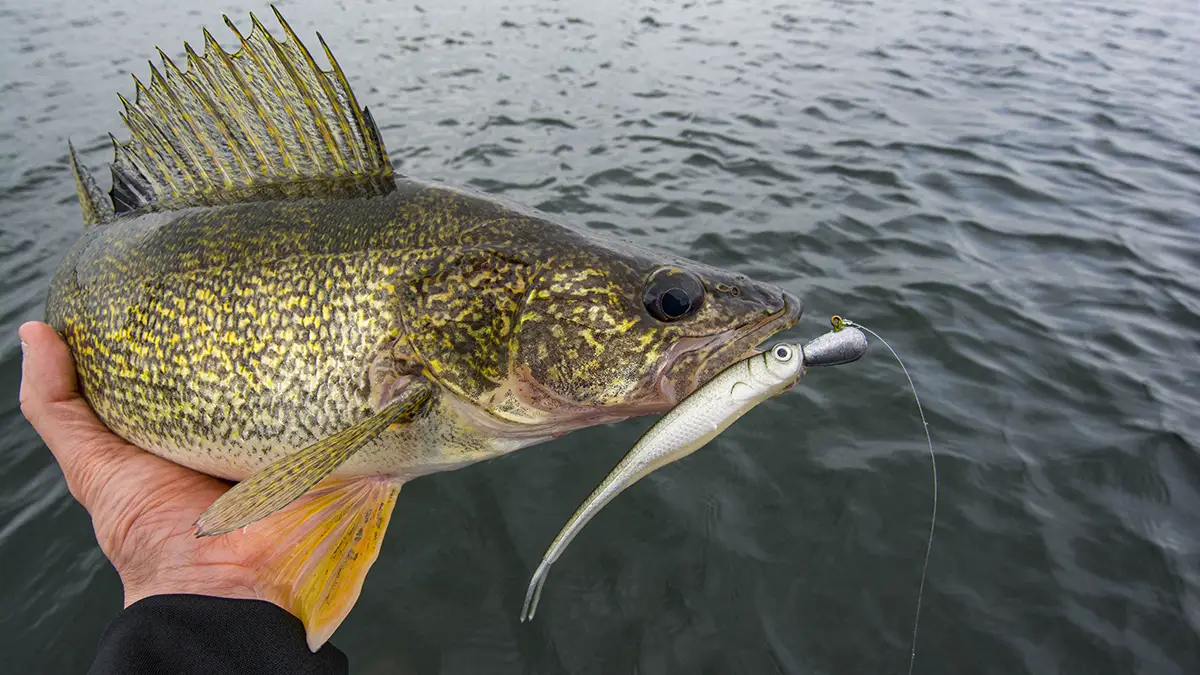
Baits
As walleye fishing can involve casting, vertical jigging, trolling and live-bait rigging, there are a lot of baits out there on the market. When you get down to it, though, a modest tackle selection will cover you for most fishing scenarios. I’ve mentioned a lot of walleye presentations above, but here’s a quick rundown of some of the best walleye baits. You’ll find more in-depth information on these and other options in our Best Walleye Lures guide.
As noted, walleye have a hard time resisting live-bait. When you’re up against lock-jawed walleye, it’s hard to go wrong using a minnow, leech or nightcrawler. In addition to rigs and spinners, there are a lot of other live-bait options for catching walleye. Tipping a jig with a minnow can be the secret ingredient needed to get fussy walleye to bite any time of year. Suspending a minnow, nightcrawler or leech beneath a slip float is another winner. Let a light breeze push this rig over a structure holding walleye and you’re likely to hook-up.
If you were to poll a group of anglers from the north country about their favorite bait for walleye, a jig rigged with some kind of soft-plastic would rank high on the list for many. I’m a huge fan of a jig paired with 3- to 5-inch plastic fork-tailed minnows, but also use various plastics, worms and curly tail grubs. I also put a lot of walleye in the boat every year on a bucktail jigs.
- Swimbaits are deadly for walleye. I mostly fish these paddle-tail plastics on a jig, but also catch fish on internally weighted swimbaits. Most anglers gravitate to 4- to 5.5-inch swimbaits, but don’t overlook smaller, finesse versions for clear water and fickle fish.
- Crankbaits consistently catch walleye from spring to ice-up. My collection spans everything from small, 2-inch shad cranks to deep-divers pushing six inches, along with lipless cranks. Casted and trolled, crankbaits are must-haves for walleye.
- Jerkbaits and minnow baits also have a place in a walleye angler’s tackle box. I’ve had some pretty fun days casting jerkbaits to wind-blown points and weed beds for walleye. Minnow baits are also great for trolling.
- Trolling spoons are important lures for catching suspending walleye oriented around open-water baitfish on the Great Lakes and other water bodies. Spinners tipped with scented soft-baits are also important trolling baits for walleye.
- Jigging hard baits are also some of the best lures for catching walleye. These include jigging spoons, blade baits and gliding jigs, like a Rapala Jigging Rap. Some anglers reserve these for spring, fall and winter, but they work in summer as well.
Other Fishing Gear
Most walleye anglers own multiple rod and reel set-ups, and prefer the characteristics of certain combos for various jigging, casting, trolling and bait-rigging techniques. I am one of these people, but when I started out I caught plenty of walleye using a 6-foot, 6-inch medium spinning rod, 2500-sized reel and 8-pound monofilament. You definitely don’t need to go overboard with fishing gear purchases if you’re just starting out.
Keep in mind you tend to get what you pay for when it comes to fishing equipment. Don’t be afraid to wait and save some extra money in order to invest in quality fishing gear because it’s likely going to perform better and last longer.
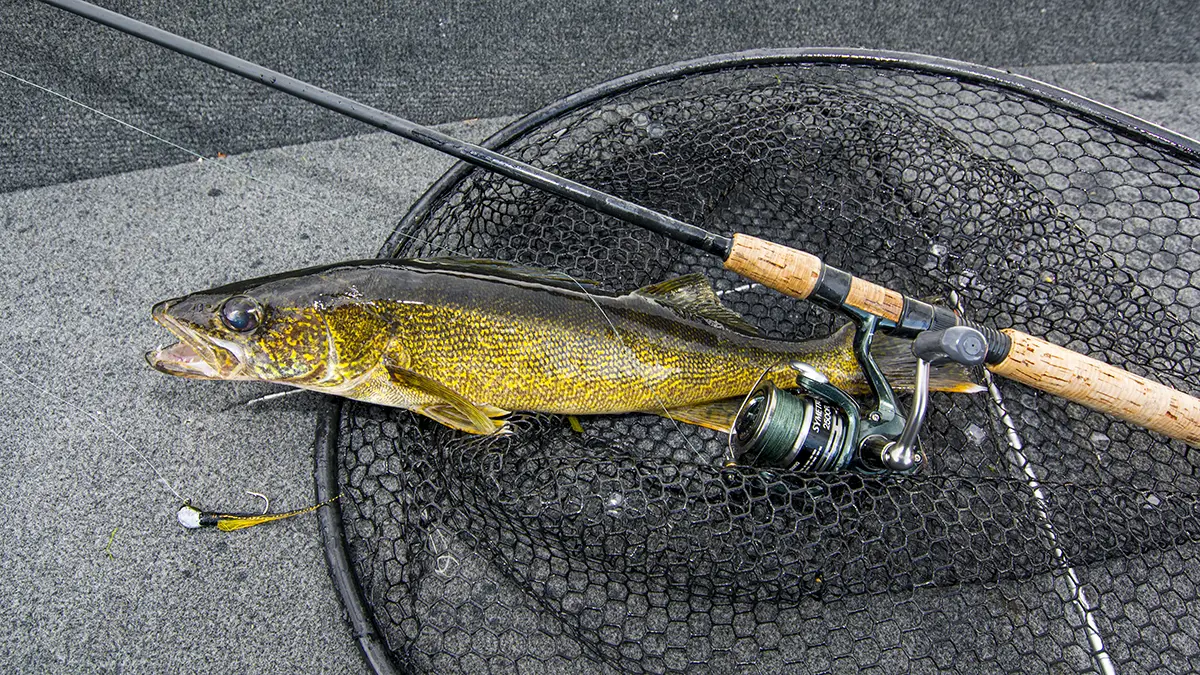
Fishing rods
Most rods today list a lure weight rating on the blank. This is a great guideline for deciding what walleye rods to buy and use for various fishing techniques. You can always push the boundaries a bit, but you’re going to get the best performance out of a rod if you stick to using baits falling within its weight range.
A 6-foot, 6-inch to 7-foot medium-light, fast or extra-fast spinning rod is a good choice for jigging, live-bait rigging and casting presentations within the 1/8- to 3/8-ounce range. Depending on where and how deep you fish though, you may find a 7-foot medium spinning with a 3/16- to 5/8-ounce range is a better rod to build your collection around.
While spinning rods are extremely popular among walleye anglers, casting models have their place. I use crankbait rods from my bass collection when using large hard-baits for walleye in summer and fall. Swimbaits on heavy jigs pair well on medium or medium-heavy baitcasting outfits. Casting rods are preferred for bottom bouncing heavy weights as well.
If you’re planning to troll baits on a regular basis, consider getting a trolling-specific set-up. I regularly use 7-foot, 10-inch medium-heavy and 8-foot, 3-inch medium telescopic rods with moderate-fast actions. Great Lakes guides I know regularly use rods up to 10 feet when running planer boards.
They stagger rods to keep the trolling spread organized, using shorter rods for inside lines and the longer rods for lures running the furthest away from the boat. Keep in mind, we’re just scratching the surface here because there’s a lot of details to consider when it comes to walleye trolling tactics.
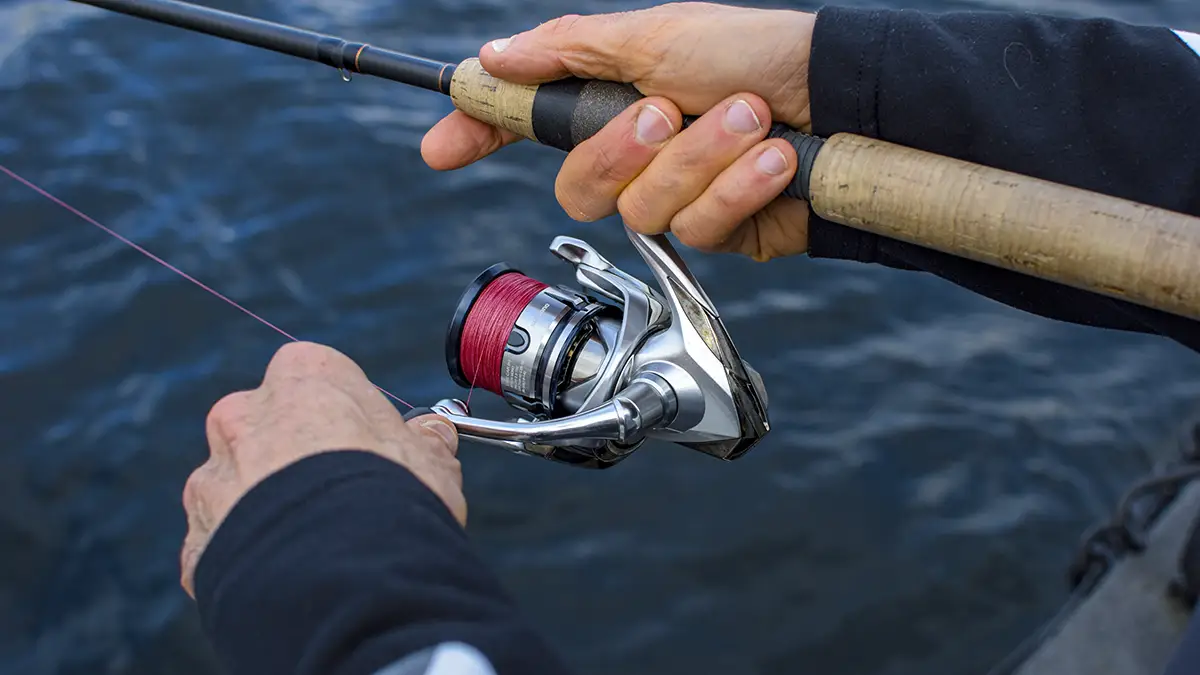
Fishing reels
Don’t underestimate the importance of a smooth, quality reel when it comes to walleye fishing. Most of my spinning rods have 2500 or 3000 sized reels on them.
If you’re keen on trolling for walleye, investing in a line-counter reel is worthwhile. It tells you how much line is out and, when cross referenced with a product’s dive curve information, serves as a useful tool for trolling with better depth control and precision.
Dive curve info is often included with product packaging, can be found on many brand’s websites or you can download the Precision Trolling App. Even without dive curve info at your fingertips, a line counter is handy for figuring out a fish-catching pattern by experimenting with different amounts of line out, and then easily duplicating the productive pattern after reeling in a fish.
Baitcast reels are popular among walleye anglers for bottom bouncing. Being able to press the thumb bar and let out line using only one hand is advantageous when pulling bouncers over irregular bottom terrain and keeping the presentation in the strike zone.
Fishing line
Using quality fishing line makes angling easier and more productive. You’ll encounter less problems, like wind knots and tangles, and experience better overall performance when using good fishing line.
The right line can also enhance certain applications, such as using monofilament when fishing a minnow on a walking sinker rig or certain crankbait scenarios. The majority of my spinning rods have 8- to 15-pound braid with a fluorocarbon leader at the end, but a few are spooled with straight fluorocarbon. This said, those starting out will find 6- to 8-pound monofilament is great for many jigging and casting applications. Learn more about the best monofilament and fluorocarbon lines in our Buyer’s Guides.
Electronics
You don’t need a fish finder/chart plotter combo to catch walleye from a boat or kayak, but the information it provides will certainly help. Traditional 2D sonar is useful for determining bottom depth and composition, as well as marking fish and their depth in the water column. Having digital map contours and GPS functionality improves everything from finding and navigating to walleye spots quickly, and then maintaining proper boat position on these areas in order to fish them effectively. Being able to make your own contour maps is also very handy.
Cutting-edge, forward-facing sonar is also changing the walleye game. Garmin’s LiveScope has made a huge difference in my walleye catches.
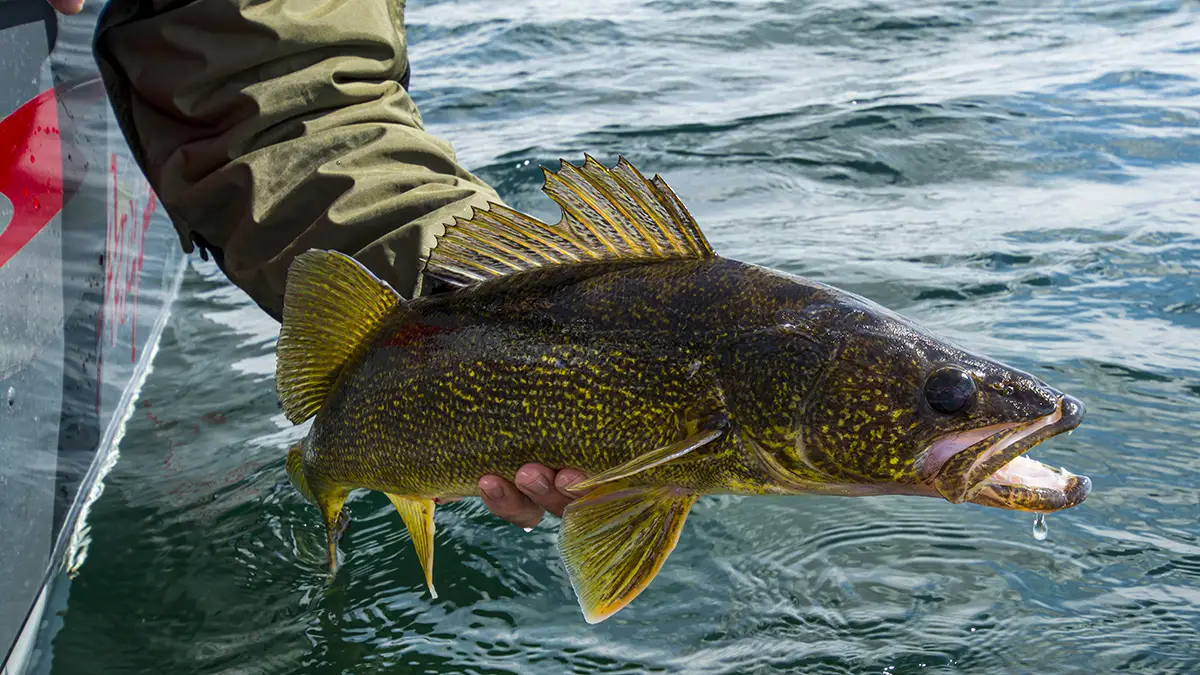
Final Tip – Don’t Pigeonhole Walleye
If there’s one thing I’ve come to realize from fishing for walleye, it is the importance of keeping an open mind. The walleye is an incredibly adaptable predator with a hearty appetite, and they aren’t following a rule book.
Over the years, I’ve had my walleye assumptions challenged many times. Catching walleye from shallow, clear water during the day or on a “bass technique,” like a drop-shot, are just two examples of things that, at the time, struck me as off the wall, but these “unconventional” discoveries were important learnings and, subsequently, have helped me catch a lot of walleye over the years.
If you’re looking to learn how to catch walleye on a regular basis, there’s no arguing the importance of learning the fundamentals when it comes to where to find walleye and the tried-and-true techniques for catching them. But, also don’t be afraid to go against the grain, trying different locations and experimenting with fishing techniques.
It’s no secret walleye tactics were very live-bait dominant for a long time. But, if you look at some of the hottest tactics today, such as aggressively snap-jigging gliding jigs and big swimbaits, it’s amazing how far things have come when it comes to walleye fishing — but also hints at how much remains to be learnt about fishing for this adaptable, opportunistic predator throughout the year.
